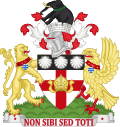 A hat stall on Earlham Street market | |
| Location | Covent Garden, Camden, Greater London |
|---|---|
| Coordinates | 51°30′50″N0°07′34″W / 51.5138°N 0.1261°W |
| Address | Earlham Street |
| Opening date | 1710 |
| Management | Camden London Borough Council |
| Owner | Camden London Borough Council |
| Environment | Outdoor |
| Goods sold | General goods, food |
| Days normally open | Monday–Saturday |
| Number of tenants | 24 |
| Website | www |
Earlham Street Market is a street market in situated in the Seven Dials area of Covent Garden on a short road between Shaftesbury Avenue and Monmouth Street. Licences to trade are issued by Camden London Borough Council.
Contents
- History
- Early history (1710–1867)
- Management by the police (1867–1927)
- Management by local councils (1927–present)
- Transport
- Bus
- Railway and tube
- References
- External links
The market has street food and clothing for sale.
It has 24 pitches and is open from Monday to Saturday, 10.00 to 16.00. [1]



